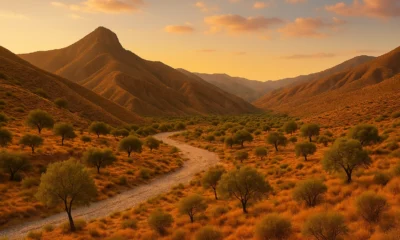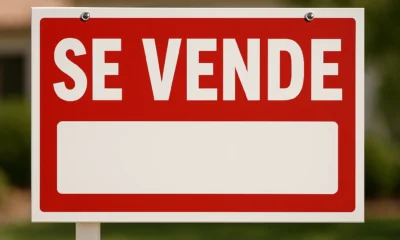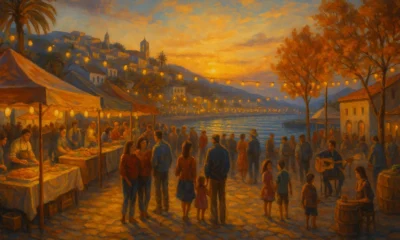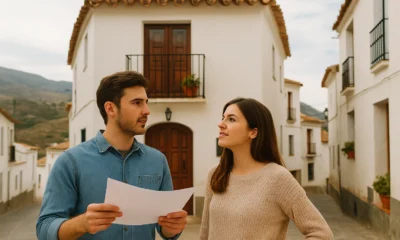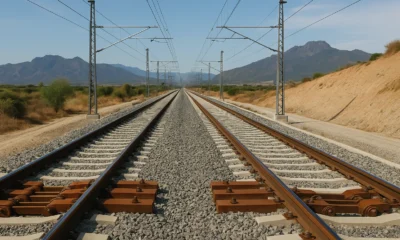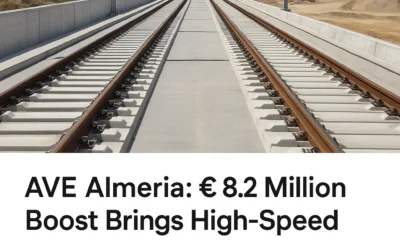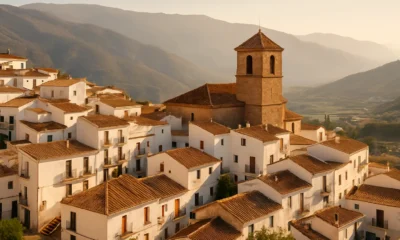Towns & Villages
Alboloduy Guide. Discover Alboloduy, Almeria — History, Nature & Local Life
Published October 19, 2025 | Category: Towns & Villages
TL;DR: Hidden in the upper Nacimiento valley, Alboloduy is a whitewashed mountain village surrounded by orchards, olive groves, and the tranquil Río Nacimiento. Ideal for walkers, photographers, and anyone seeking rural Andalusia untouched by mass tourism.
Alboloduy Guide. Discover Alboloduy, Almeria
At a Glance
- Where: In the Alpujarra Almeriense, upper Nacimiento valley, at the foot of the Sierra Nevada.
- Why visit: Traditional village life, scenic hiking routes, historic architecture, and peaceful surroundings.
- Distance: About 34 km from Almeria city, roughly 40 minutes by car via the A-92 and Nacimiento valley road.
- Altitude: 441 metres above sea level.
- Population: Approximately 600 residents (INE 2024).
Why Visit Alboloduy
Set in one of the most picturesque corners of inland Almeria, Alboloduy combines the serenity of the mountains with the warmth of a living, working village. Life here follows the rhythm of the land: farmers tending almond trees, locals chatting in the shade of the plaza, and clear skies stretching over the Nacimiento riverbed. For travellers seeking authenticity and calm, this is rural Andalusia at its best — scenic, slow, and steeped in history.
Alboloduy’s strategic location also makes it an excellent base for exploring nearby towns like Abla, Abrucena, or the mountain routes that connect the lower slopes of the Sierra Nevada. Despite its modest size, it offers a surprising variety of cultural and natural experiences — all within walking distance.
History and Heritage
Alboloduy traces its origins to the Moorish period, when small settlements flourished along the fertile Nacimiento valley. The village name is derived from the Arabic “al-bulud,” meaning “the hill,” referring to its elevated position overlooking the river terraces. Following the Christian Reconquest and the expulsion of the Moriscos in the 16th century, Alboloduy repopulated gradually with settlers from nearby Castile and Murcia.
Today, the town retains its Alpujarra-style layout: winding alleys, flat-roofed houses adapted to the mountain slope, and a compact plaza that doubles as the social heart. The Iglesia de San Juan Bautista, built between 1795 and 1802, represents the neoclassical style promoted by the Bishopric of Almeria in that period. Inside, the single nave and restrained decoration mark a shift from earlier Baroque forms — simple, harmonious, and proportionate.
The church stands on the same site as a much older sanctuary destroyed by an earthquake in the 18th century, a reminder of how the region’s architecture evolved through both necessity and faith. The plaza around it remains the natural gathering point for markets, festivals, and processions.
Walking Trails and Nature
Alboloduy lies along the Río Nacimiento, a tributary that descends from the Sierra Nevada toward the desert plains near Tabernas. The surrounding landscape offers a mosaic of olive groves, dry stone terraces, and almond orchards. For walkers, this is a paradise of quiet rural tracks and panoramic ridge views.
- PR-A 370 “Cañada de los Arquillos y Cordel de la Solana” — a circular route starting from the village, passing old farmhouses and lookout points.
- PR-A 371 “Alboloduy–Nacimiento” — follows the riverbed through lush vegetation, ideal in spring when wildflowers bloom.
- Alboloduy–Abla link route — connects the two villages through the valley, suitable for day hikers with moderate fitness.
Detailed route descriptions are available via the official Alboloduy municipal trail portal, maintained by the Diputación de Almería. Hikers should carry sufficient water and respect agricultural boundaries, as many paths pass through working farmland.
Festivals and Local Traditions
Festivities in Alboloduy reflect the rhythm of the seasons and its deep-rooted religious traditions. The most important celebration is the Fiestas del Santo Cristo de la Humildad, typically held in mid-September. The event includes processions, open-air music, and community meals around the plaza, drawing both locals and visitors from neighbouring towns.
Earlier in the year, smaller patronal events honour Saint John the Baptist in June and other seasonal gatherings take place during Easter Week. For upcoming official dates, the best reference remains the Diputación’s cultural calendar or announcements from the Ayuntamiento de Alboloduy.
Local Gastronomy
Food in Alboloduy follows the seasons and traditions of the Alpujarra Almeriense. The cuisine features hearty, simple recipes made with what the valley provides — olive oil, almonds, peppers, goat meat, and legumes. Try local favourites such as migas almerienses (fried breadcrumbs with chorizo and peppers), potaje de hinojos (fennel stew), and choto al ajillo (young goat sautéed with garlic and wine). Desserts often feature honey and almonds, with roscos de anís and tortas de aceite common during festivals.
The village has a handful of family-run bars and restaurants around the Plaza del Ayuntamiento where visitors can enjoy homemade dishes. During weekends or fiestas, reservations are recommended as many travellers from Almeria and Guadix stop here for lunch on their way through the valley.
Everyday Life and Rural Culture
Unlike coastal resorts, Alboloduy’s life is unhurried and genuine. Mornings start with coffee on the plaza and conversations about the harvest. Farmers still use small-scale irrigation systems — descendants of Moorish acequias — to water almond and olive trees. The sound of church bells marks time as predictably as it has for centuries.
Visitors who stay longer can join local workshops or cultural initiatives supported by the Diputación, often focused on traditional crafts, local produce, and environmental awareness. Rural tourism is growing, but in a gentle, community-driven way that preserves what makes Alboloduy special.
Getting There and Around
By car: From Almeria city, take the A-92 motorway toward Guadix/Granada and exit toward the Nacimiento valley (signposted as Abla–Alboloduy). Follow the road for about 10 km to reach the village centre. The drive takes approximately 40 minutes.
By public transport: The provincial Transport Consortium of Almeria occasionally lists bus routes connecting Almeria, Fiñana, and Alboloduy. Services are limited, so check updated schedules before travelling.
Parking: Free on-street parking is available near the main square and entry roads, though spaces may be restricted during fiestas.
Practical Information
Ayuntamiento de Alboloduy
Plaza del Ayuntamiento, 1 — 04531 Alboloduy (Almeria)
Tel. 950 644 848
Website: www.alboloduy.es
Tourism and Trails:
Municipal Hiking Routes
Diputación Cultural Listings
Nearby Destinations: Abla (8 km), Abrucena (12 km), Fiñana (20 km), Tabernas (30 km).
Responsible Travel Tips
- Stay on marked trails and avoid crossing private farmland without permission.
- Reduce noise near the church or during religious events.
- Support local businesses by eating in village restaurants and purchasing local products.
- Respect water sources and irrigation canals; these are vital for local agriculture.
A landscape of contrasts
Alboloduy may be small, but it represents the best of inland Almeria — a landscape of contrasts where mountain, river, and community coexist in balance. Whether you come for a walk, a meal, or a deeper dive into local traditions, this hidden village offers a glimpse of authentic Andalusian life that remains timeless and true.
For more updates from across the province, visit our Towns & Villages category.
Towns & Villages
Moros y Cristianos Vera 2025: Big parade on Saturday + full weekend program
Published October 25, 2025 | Category: Activities & Attractions
TL;DR: The III Andalusian “Moros y Cristianos” meeting is underway in Vera this weekend. Saturday is parade day; Sunday brings a guided visit to historic Bayra and the official closing.
Moros y Cristianos Vera 2025: what’s happening this weekend
Vera hosts the III Andalusian Meeting of Moros y Cristianos from Friday to Sunday, bringing together associations from across Andalusia for a weekend of history, costumes and music. The event combines civic acts, talks, performances and a standout parade on Saturday.
Key times
- Friday (evening): Opening at Auditorio Ciudad de Vera, welcome session and roundtable on the tourism potential of these historic fiestas. Festive atmosphere continues at the Recinto Ferial.
- Saturday (main day): Morning association activities and staged performances; big parade in the afternoon (starts from the fairground and runs through central streets). More performances and music afterwards.
- Sunday (closing): Guided visit to the archaeological site of Bayra on Cerro del Espíritu Santo, followed by an exhibition in Vera and the official closing around midday.
Where it takes place
The weekend program is centered around the Auditorio Ciudad de Vera for the opening and the Recinto Ferial El Palmeral for the parade and festivities, with the Sunday visit to the historic hill of Bayra.
Who will enjoy it
Great for families, culture lovers and photographers. Expect colorful costumes, traditional music and a lively street atmosphere. If you’re staying in the Levante area (Vera, Garrucha, Mojacar, Cuevas), this is an easy, unmissable day out.
Practical info & official links
- Official association info: morosycristianosvera.com
- Municipal agenda & updates: vera.es
Note: Timings may adjust slightly due to logistics; check the official pages on the day for last-minute changes.
For more updates from across the province, visit our News category.
Towns & Villages
Alcontar Guide. Discover Alcontar, Almeria — Mountains, Hiking & Authentic Andalusian Life
Published October 23, 2025 | Category: Towns & Villages · Travel Tips
TL;DR: Alcontar is a peaceful inland village in the Almanzora Valley, known for its whitewashed houses, fresh mountain air, scenic walking routes and traditional Andalusian life.
Alcontar Guide. Discover Alcontar, Almeria
Table of Contents
- Introduction
- History & Heritage
- Nature & Walking Trails
- Culture & Local Life
- Gastronomy
- Festivals & Events
- Getting There & Accommodation
- Itineraries & Day Trips
- Practical Information
Introduction: A Hidden Gem in the Almanzora Valley
Nestled in the heart of the Almanzora Valley, the village of Alcontar offers a quiet and authentic Andalusian escape. Surrounded by olive groves and framed by the dramatic Sierra de los Filabres, it sits at nearly 950 metres above sea level. Life moves at a gentle pace here — mornings filled with birdsong, evenings cooled by mountain breezes, and a community that still cherishes its rural traditions.
Visitors come for the unspoiled landscapes, crisp air and the opportunity to experience rural Almeria at its most genuine. The municipality also includes smaller hamlets like El Hijate, each preserving their own slice of history and culture.
History & Heritage
The name “Alcontar” likely derives from the Arabic al-qantara — meaning “the bridge” — reflecting the ancient river crossings that once connected this valley to surrounding settlements. Human activity here dates back millennia, with archaeological findings suggesting Roman and Moorish influence throughout the Almanzora region.
Historic remnants like the Torre del Ramil, an old watchtower, remind visitors of Alcontar’s strategic past during the period of Moorish rule. Later, in the 19th century, the municipality gained autonomy, and the distinctive whitewashed architecture that defines today’s village began to flourish.
Nature & Walking Trails
For nature lovers, Alcontar is a paradise of mountain paths, dry riverbeds and quiet forest trails. The area is part of the Sierra de los Filabres natural environment — one of Almeria’s most scenic inland landscapes.
Popular local walks include the short ascent from the village to natural viewpoints overlooking the Almanzora Valley, as well as marked routes such as PR-A 12 and PR-A 72, which weave through pine forests and ancient irrigation channels.
In spring, wildflowers carpet the hillsides, while autumn brings golden tones and clear skies perfect for hiking. Even in summer, temperatures remain cooler than the coast thanks to the altitude.
Culture & Local Life
Life in Alcontar revolves around the central plaza and the Church of Nuestra Señora del Rosario, built in the early 19th century. Here, you’ll find a small fountain, shaded benches and the relaxed rhythm of local conversation.
Farming remains at the heart of the economy — almonds, olives and cured meats are local staples. Artisanal honey and homemade pastries can be found at small village shops or local fairs. Don’t expect bustling nightlife — instead, evenings here are about quiet streets, friendly bars and the sound of crickets in the distance.
Gastronomy
Traditional mountain cuisine defines Alcontar’s food culture. Popular dishes include:
- Migas: Fried breadcrumbs with chorizo and peppers, a classic comfort meal after a day outdoors.
- Olla de trigo: A rich wheat and meat stew typical of inland Almeria.
- Local cured meats: Particularly ham and sausages from nearby farms.
Desserts often feature figs, quince or almonds — try hornazos or homemade fig jam. Pair your meal with a glass of red wine from the Almanzora Valley, known for its full-bodied and earthy flavour.
Festivals & Events
The village celebrates its patron festival in honour of the Virgen del Rosario every October, featuring processions, live music and community gatherings. In the nearby hamlet of El Hijate, the annual June festival of San Antonio de Padua brings together residents for traditional dances and open-air feasts.
Visitors are warmly welcomed during these fiestas — they are a chance to experience genuine rural Andalusian celebration, complete with fireworks and homemade food.
Getting There & Accommodation
By car: Alcontar is around 95 km north of the city of Almeria (about 1 hour 15 minutes by car) via the A-92 and local roads through the Almanzora Valley.
By public transport: Limited options — driving is recommended.
Accommodation: Small rural houses and guest lodges (casas rurales) dominate. Staying overnight allows visitors to enjoy the mountain tranquillity, starry skies and local hospitality.
For up-to-date local information, visit the official Ayuntamiento de Alcontar website or check regional listings via the Diputación de Almería.
Itineraries & Day Trips
- Half-day walk: Follow the village fountain trail to nearby terraces for panoramic views of the valley.
- Full-day hike: Explore the pine forests of the Sierra de los Filabres on foot, with picnic spots and old stone farmhouses along the way.
- Day trip idea: Combine Alcontar with the villages of Bacares or Seron for a full mountain-culture itinerary.
Practical Information
- Altitude: 954 m above sea level.
- Population: Approx. 660 inhabitants.
- Area: 93.9 km².
- Climate: Mild mountain climate — cooler nights, dry summers, ideal for hiking in spring and autumn.
- Emergency numbers (Spain): 112 (General) · 061 (Medical) · 062 (Guardia Civil) · 085 (Fire).
For more rural destinations across the province, visit our Towns & Villages section or check our Travel Tips for routes, itineraries and local insights.
-
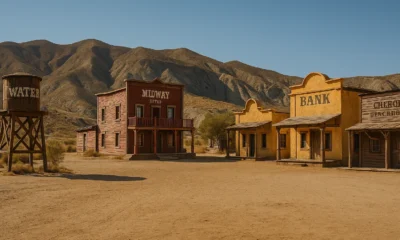
 Events1 month ago
Events1 month agoAlmería Western Film Festival 2025: Honoring Charo López, Roque Baños and More
-
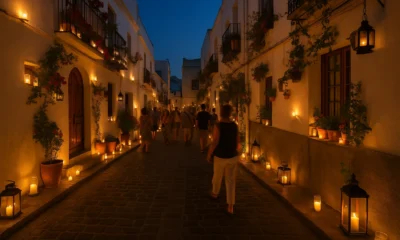
 Activities & Attractions1 month ago
Activities & Attractions1 month agoNight of the Candles in Mojácar: village aglow on September 20
-

 Activities & Attractions1 month ago
Activities & Attractions1 month agoAlmería Cultural Agenda: Best Events This September & October 2025
-
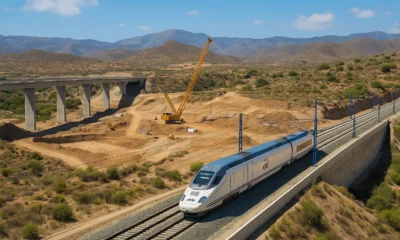
 Infrastructure1 month ago
Infrastructure1 month agoAVE High-Speed Rail to Almeria Passes 50% Completion Ahead of 2026 Deadline






















